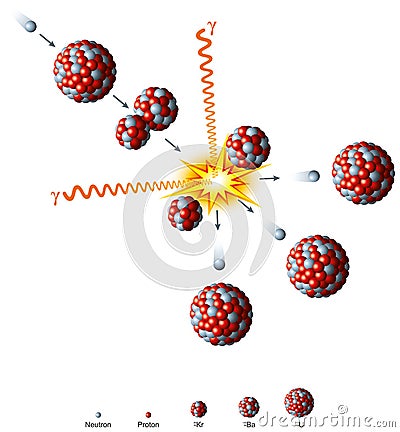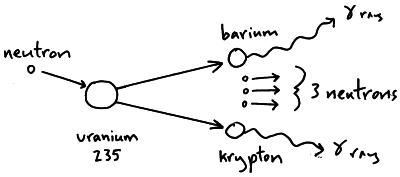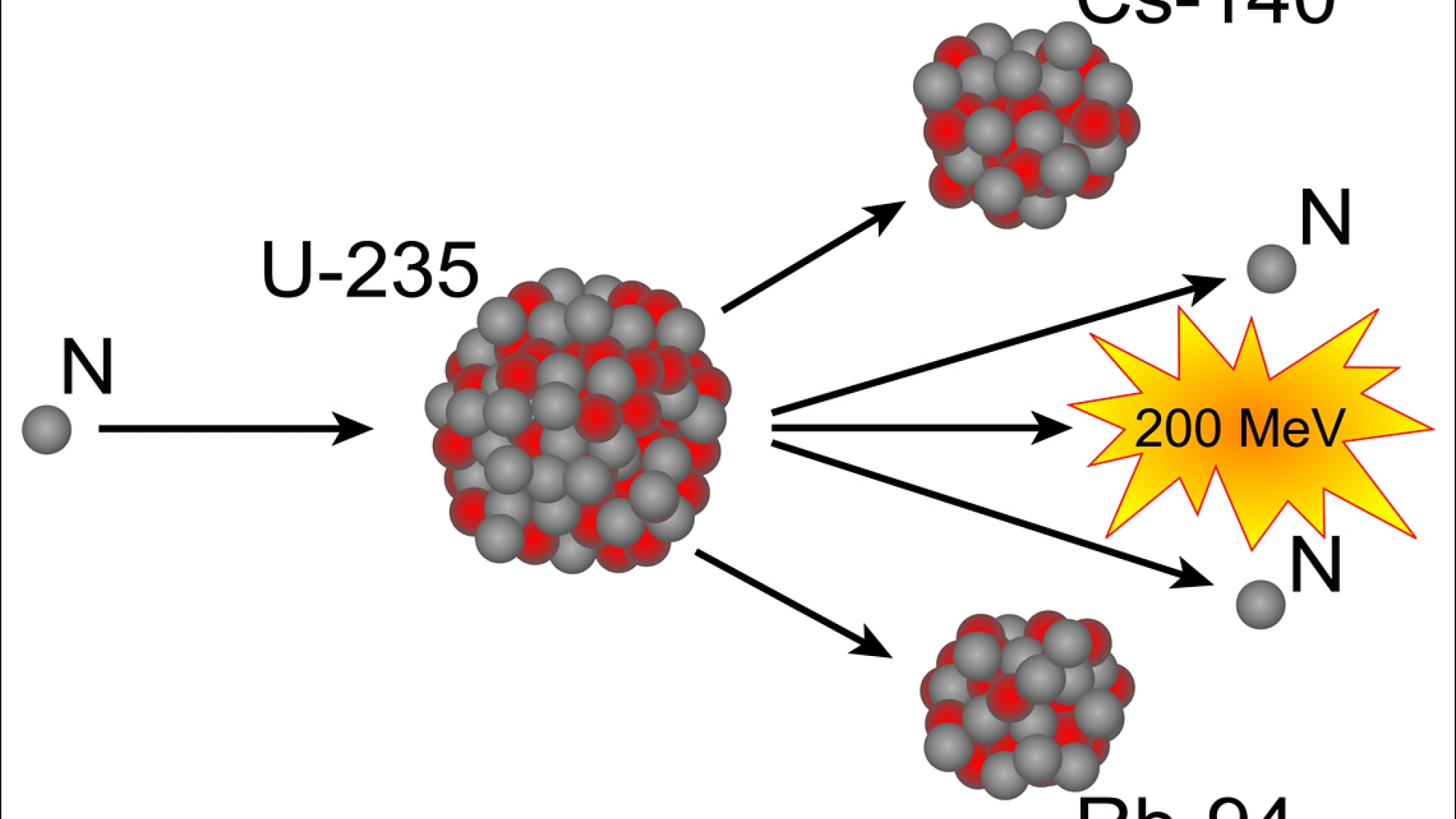


235 U occasionally decays by spontaneous fission with a very low probability of 0.0000000072. 235 U decays via alpha decay (thorium-231) into 231 Pa with a half-life of 7×10 8 years. Its specific activity is very low 3.4×10-7 Ci/g. Uranium reserves which exist under the oceans are about a thousand times more abundant than the reserves found in high quality minerals on land. 238 U occasionally decays by spontaneous fission with the probability of 0.000055. Plutonium 239 is highly fissile and can also be used as a nuclear fuel or an atomic explosive. After a few days, uranium 239 has transformed into plutonium 239, a radioisotope with a half-life of 24,000 years.

Isolated neutrons have a half-life of 10.4 minutes and decay to stable hydrogen. What happens more frequently is that a neutron capture causes the nucleus to become unstable. Those can hit other nearby uranium-235 atoms and cause those to fission. Fission occurs comparatively rarely, and even under bombardment with energetic neutrons the probability of fission remains very low. The more abundant uranium 238 is sometimes called fertile.

Highly sought-after, it can be used as a fuel in nuclear reactors and as an explosive in atomic bombs. Uranium 235 is the only natural nucleus that can easily undergo fission. The boundary between the uranium meant for civilian uses (LEU or low-enriched uranium) and that uranium meant for military use (HEU or highly-enriched uranium) is generally fixed at 20%. In order to have an atomic bomb, the uranium has to be enriched to above 90%. These reactors are powered by uranium which is enriched to have anywhere between 3 and 4% of uranium 235. It must be enriched before it can be used as a fuel in any commercial reactor. Because the half-life is different with U238 and U235, the higher the percentage of U235 so retroactively. Current ratio of U235 in natural uranium is the same anywhere in the solar system. Natural uranium is poor in the fissile isotope, containing as it does only 0.70% of uranium 235. Calculates the dating in the past from the ratio of Uranium 235 in natural uranium. Certain uranium compounds (hexavalent ones) are highly soluble whereas others (tetravalent) are not.Īs a particularly heavy element, uranium isotopes are primarily alpha emitters, though these radiations are sometimes accompanied by gamma rays. Uranium can be found in the Earth crust at 3 parts per million, particularly in granite and volcanic rocks. The photograph above shows the ‘yellow cake’ on a filter at the Haute-Vienne Jouac treatment plant in Limousin, France.įrom a chemical point of view, uranium belongs to the actinide family, a group of atoms whose properties are similar to those of actinium, the 89th element in Mendeleyev’s periodic table. This high concentration makes it much easier to transport the uranium from the mine to the factory. The half-life of U-235 is 700 million years, while U-238 has a much larger half-life of 4.5 billion years. Radioactive decay of both fission products and transuranic elements. The concentrated uranium they are handling, also known as ‘Yellow Cake’, takes the form of a bright yellow powder containing about 750 kg of uranium per tonne. Nuclear reactors work by containing and controlling the physical process of nuclear fission. The radioactivity of uranium is low, and so no particularly high standards of radioprotection are needed: as can be seen with the above workmen. The first reported nuclear fission occurred in 1939 when three German scientists, Lise Meitner, Otto Hahn, and Fritz Strassman, bombarded uranium-235 atoms with slow-moving neutrons that split the U-238 nuclei into smaller fragments that consisted of several neutrons and elements near the middle of the periodic table. They were all formed billions of years ago by the explosion of heavy stars (supernovae). The nuclei of uranium 235 and 238 are, along with those of thorium 232, the heaviest present in nature. While both isotopes were at the time of Earth formation equally abundant, natural uranium today consists today of 99.3% uranium 238 and only 0.70% uranium 235. The half-life of uranium 238 is of 4.5 billion years, while uranium 235 has a half-life of ‘only’ 700 million years. This high abundance, taken in conjunction with difficult geological conditions and harsh climate have made the extraction process an almost entirely automated one.Īll isotopes of uranium are unstable and radioactive, but uranium 238 and uranium 235 have half-lives sufficiently long to have allowed them to still be present in the Solar System and on Earth. Western Canada is particularly rich in uranium, with often between 28 to 210 kilograms of uranium per tonne as opposed to the usual 3 grams per tonne found elsewhere. Nuclear power plants are designed in such a way that they cannot form a supercritical mass of fissionable material and therefore cannot create a nuclear explosion.Athabasca plateau in Saskatchewan province, Canada.


 0 kommentar(er)
0 kommentar(er)
